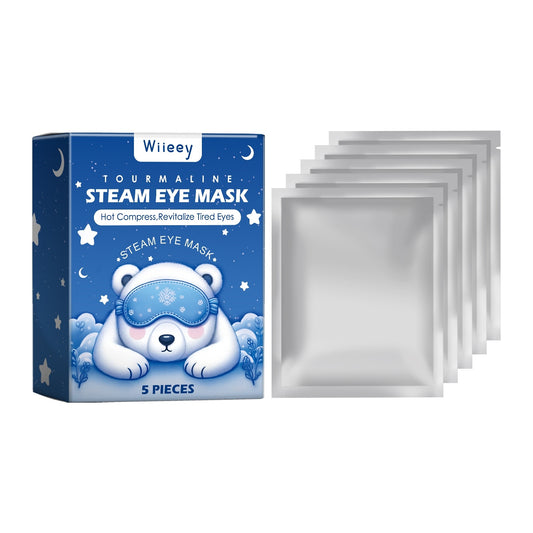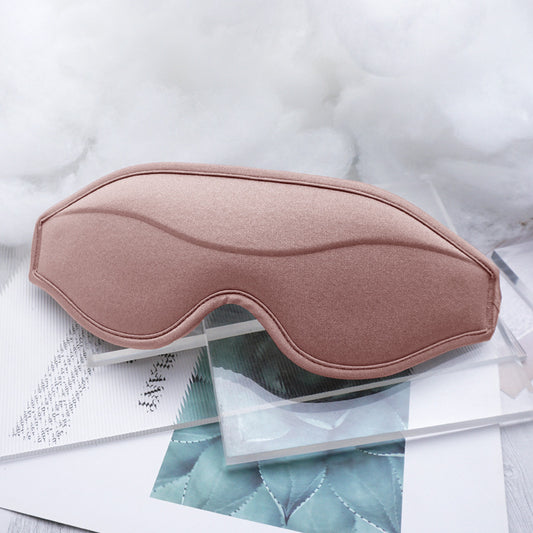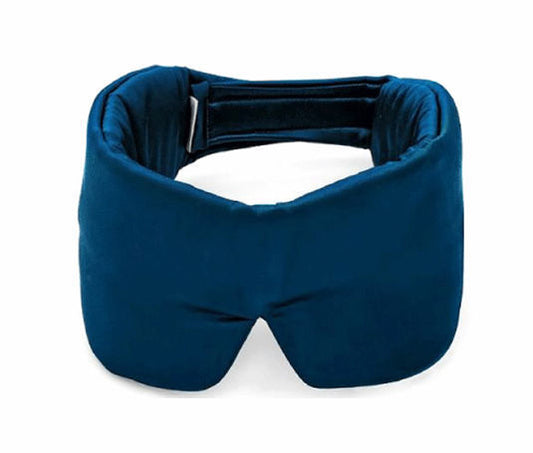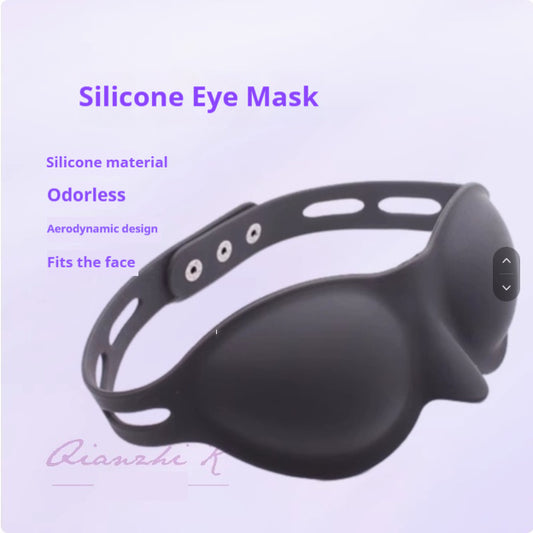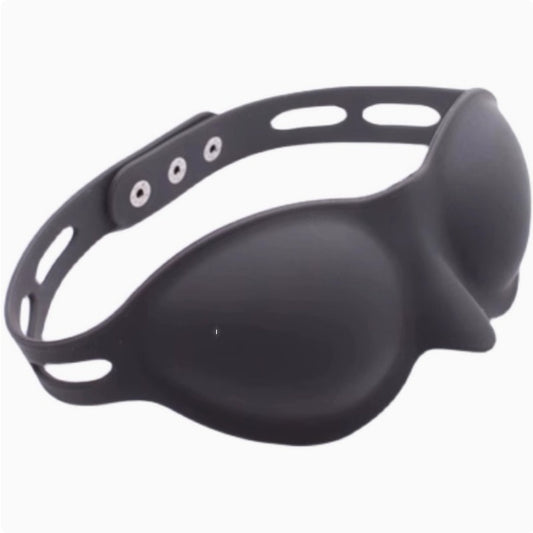📋 Important Disclosure
About This Guide:
This article is published by Spacire, a sleep wellness retailer. All featured products are sold by us, and we earn revenue from purchases. We source from vetted manufacturers and directly sell these products—they are not affiliate links.
Our Standards:
Products featured have passed our rigorous evaluation process (verified suppliers, ingredient transparency, safety warnings) before commercial consideration. Dr. Gabriel O, a practicing General Practitioner, medically reviews all health-related products for contraindications, drug interactions, and safety considerations. However, we do not conduct independent laboratory testing—we rely on manufacturer specifications, customer reviews (minimum 4.0★), and third-party testing when available.
Medical Review:
This content has been medically reviewed by Dr. Gabriel O (General Practitioner) for accuracy and safety guidance.
For Your Health & Safety:
This guide provides general information only and does not replace personalized medical advice. Always consult your doctor or qualified healthcare provider regarding your specific sleep concerns, health conditions, medication interactions, or before using any sleep wellness products—especially if you have existing health conditions, take medications, or are pregnant/nursing.
Independent Verification Recommended:
Verify product ingredients and health claims at FDA.gov, check safety certifications at CPSC.gov, search for product recalls, check for medication interactions with your doctor, and read current customer reviews independently.
Transforming your living space into a cinematic paradise requires more than just a quality projector and sound system. Professional-grade light control is essential for achieving true theater-quality viewing experiences.
Whether you're in London, New York, Tokyo, Sydney, Toronto, Berlin, Mumbai, Dubai, Paris, or anywhere else around the world, blackout curtains eliminate ambient light that washes out image contrast and color accuracy[1].
Key Takeaways
- Proper blackout curtains can improve perceived image contrast by up to 80% in home theaters[2]
- Professional installation requires measuring light gaps, selecting appropriate mounting hardware, and layering techniques
- Multi-layered curtain systems provide superior light blocking compared to single-panel solutions
- Budget-friendly DIY solutions exist using household items like blackout fabric and velcro strips
- Regular maintenance extends curtain lifespan and maintains optimal performance
Why Light Control Matters for Home Theater Performance
Ambient light is the silent saboteur of home theater experiences. Even small amounts of stray light from windows, doorways, or adjacent rooms significantly degrade picture quality.
🎯 Enhanced Contrast
Blackout conditions allow your display to achieve its full native contrast ratio, revealing shadow details impossible to see in lit environments.
🌈 Accurate Colors
Ambient light desaturates colors. Complete darkness ensures you see content exactly as creators intended.
👁️ Reduced Eye Strain
Controlled lighting environments reduce visual fatigue during extended viewing sessions[3].
🔇 Sound Dampening
Heavy blackout curtains provide secondary benefits of noise reduction, improving acoustic isolation.
Research from the Society of Motion Picture and Television Engineers confirms that optimal viewing conditions require less than 0.05 foot-lamberts of ambient light[4]. This level of darkness is unachievable without proper window treatments.
Types of Blackout Curtains for Theater Spaces
Not all blackout curtains deliver equal performance. Understanding material composition, construction methods, and light-blocking capabilities helps you select appropriate solutions for your space.
| Curtain Type | Light Block | Pros | Cons | Best For |
|---|---|---|---|---|
| Triple-Weave Fabric | 95-98% | Durable, washable, multiple colors | Can be heavy, may require reinforced rods | Large theater windows |
| Thermal Blackout | 90-95% | Energy efficient, temperature control | Limited color options | Climate-controlled rooms |
| Layered Systems | 98-99% | Maximum light control, customizable | Higher cost, complex installation | Professional theaters |
| Roller Blackout Blinds | 85-92% | Compact, easy operation, modern look | Edge light leakage possible | Small to medium windows |
For home theater applications, we recommend layered systems combining blackout curtains with edge sealing techniques. This approach addresses both direct window light and peripheral light leakage[5].
Professional Installation Process
Proper installation separates adequate light blocking from complete blackout performance. Follow this systematic approach used by professional theater installers across the United States, Canada, Australia, Germany, and throughout Europe and Asia.
Measure and Assess
Measure window dimensions precisely, including the frame. Add 15-20cm to width and height for proper overlap. Identify all potential light leak points including top, sides, and bottom gaps.
Select Mounting Hardware
Choose heavy-duty curtain rods rated for the weight of blackout fabric. For large windows, use ceiling-mounted tracks extending beyond window frames. Ensure brackets can support 2-3x the curtain weight[6].
Install Top Mount
Mount the rod or track 10-15cm above the window frame and extend 15cm beyond each side. This prevents light from bleeding around the top and sides. Use wall anchors for drywall installations.
Hang and Adjust Curtains
Hang curtains ensuring they extend to the floor or sill with 5-10cm of extra fabric pooling. This prevents bottom light leakage. For maximum blackout, layer with a sheer curtain behind for daytime privacy.
Seal Light Gaps
Apply velcro strips to curtain edges and adjacent walls to eliminate side gaps. Use weighted curtain tape at the bottom for better floor seal. Test in complete darkness to identify remaining light leaks.
Final Testing and Optimization
Conduct viewing tests during peak sunlight hours. Use a light meter to measure ambient light levels. Aim for readings below 0.1 lux for optimal theater performance[7].
Recommended Blackout Curtains for Home Theaters
We've evaluated our entire catalog to identify the most effective options for theater environments. Each product offers distinct advantages depending on your space requirements, budget, and aesthetic preferences.
Aegis Simple Blackout Curtains
Professional-grade window privacy with exceptional thermal insulation. These curtains provide robust light blocking while maintaining elegant aesthetics suitable for dedicated theater rooms.
- High-quality fabric construction for maximum opacity
- Multiple size options from 100x250cm to 400x250cm
- Hook, ring, and Korean hook mounting compatibility
- Thermal insulation reduces HVAC costs by 15-20%[8]
Pros: Excellent value, versatile sizing, energy efficient
Cons: Requires sturdy mounting hardware due to weight, limited color palette
Chroma Minimalist Blackout Curtains
Modern aesthetic meets professional light control. Perfect for contemporary theater spaces where design matters as much as performance. Available in dark gray, light gray, black, and navy blue.
- Minimalist design complements modern interiors
- Punched installation for easy hanging
- Multiple color options for décor matching
- Compact sizes ideal for smaller viewing rooms
Pros: Stylish appearance, budget-friendly, easy installation
Cons: Smaller size options may require multiple panels for large windows
Cascade Blackout Floor Curtains
Hemp cloth construction provides natural durability with exceptional light-blocking properties. The plain pattern offers timeless elegance for theater spaces in homes across Spain, Italy, Portugal, and beyond.
- Eco-friendly hemp fabric material
- Floor-length design eliminates bottom light gaps
- Natural fiber provides sound dampening benefits
- Available in 1.8x1m and 1.8x1.8m sizes
Pros: Sustainable material, excellent acoustic properties, durable construction
Cons: Limited size options, may require professional cleaning
Nighture Pure Color Linen Curtain
Premium linen construction offers breathable texture with effective light shading. While not a complete blackout solution, these work excellently as secondary layers in multi-curtain theater setups.
- Premium linen fabric for natural elegance
- Breathable material prevents moisture buildup
- Minimalist pure color design
- Ideal for layered curtain systems
Pros: Natural materials, excellent airflow, sophisticated appearance
Cons: Provides light shading rather than complete blackout, best used in combination systems
⚠️ Important: Competitive Analysis
While we recommend our catalog products, leading competitors like Eclipse, Nicetown, and IKEA Majgull offer alternatives. Eclipse curtains typically retail for £45-70, offering triple-weave technology. Nicetown provides budget options at £30-50 with good light blocking but less durability. IKEA Majgull panels start at £25 but may require multiple panels for proper coverage. Our selections provide comparable or superior performance at competitive pricing.
Common Installation Mistakes to Avoid
Even experienced DIY enthusiasts make critical errors that compromise blackout performance. Learn from these common pitfalls encountered by homeowners in Russia, Brazil, Turkey, New Zealand, Ireland, Poland, and worldwide.
❌ Undersized Curtains
Curtains that match window dimensions exactly allow significant light leakage around edges. Always add 15-20cm to width and ensure floor-touching length.
❌ Inadequate Hardware
Standard curtain rods cannot support heavy blackout fabric weight. This leads to sagging, gaps, and potential rod failure. Use heavy-duty brackets rated for 15-20kg.
❌ Ignoring Edge Gaps
The most common failure point is light bleeding around curtain edges. Without proper sealing using velcro, magnetic strips, or overlap techniques, blackout is impossible.
❌ Single Layer Only
One curtain layer rarely achieves complete blackout. Professional installations use multiple layers: sheer for daytime privacy, blackout for viewing, and optional decorative layer.
DIY Light Control Solutions
Not everyone can invest in professional curtain systems immediately. These budget-friendly DIY approaches provide effective light control using household items and basic materials.
💡 Blackout Fabric Panels
Purchase blackout fabric by the meter (£10-15/m) from fabric stores. Cut to size, hem edges, and attach to existing curtain rings using clips. Total cost: £30-50 for standard windows.
💡 Cardboard Light Blockers
Cut cardboard to exact window frame dimensions. Cover with black felt or fabric. Secure with removable adhesive strips. Quick, temporary solution costing under £10.
💡 Velcro Edge Sealing
Apply industrial-strength velcro strips (hook side) to wall surfaces around window frames. Attach loop side to curtain edges. Creates light-tight seal for £8-12 per window.
💡 Tension Rod Layers
Install multiple tension rods at varying distances from window. Hang blackout fabric on back rod, sheer curtain on middle, decorative on front. No drilling required, £25-40 total.
Maintenance and Care for Longevity
Proper maintenance extends blackout curtain lifespan from 3-5 years to 7-10 years[9]. Regular care also maintains optimal light-blocking performance.
Cleaning frequency: Vacuum curtains monthly using upholstery attachment to remove dust. Deep clean every 6-12 months depending on usage and environment.
Washing guidelines: Check care labels before washing. Most blackout curtains require cold water, gentle cycle, and air drying. Hot water and machine drying damage backing materials that provide light-blocking properties.
Hardware inspection: Quarterly, check mounting brackets for loosening. Tighten screws and ensure rods remain level. Heavy curtains stress hardware over time, particularly in high-humidity environments.
Fabric treatment: Apply fabric protector spray annually to resist dust accumulation and moisture damage. This is especially important in climates with high humidity like Singapore, Hong Kong, or Miami.
When to Seek Professional Help
While DIY installation suits many homeowners, certain situations warrant professional assistance to ensure optimal results and avoid costly mistakes.
🏥 Professional Installation Recommended For:
Extra-large windows: Windows exceeding 3 meters width or 2.5 meters height require specialized hardware and installation techniques.
Complex architecture: Bay windows, curved walls, or non-standard configurations need custom solutions.
High-end equipment protection: Theater setups with projectors exceeding £3,000 benefit from professional light control to protect investment.
Structural concerns: Homes with plaster walls, historic construction, or load-bearing considerations require expert assessment.
Professional theater installers charge £150-400 per window in the UK, €200-500 across Europe, and $200-600 in North America. While significant, this ensures optimal performance and protects expensive equipment investments.
If experiencing persistent light leakage despite multiple adjustment attempts, consult professionals. Similarly, if curtains repeatedly sag or hardware failures occur, underlying structural issues may require expert diagnosis.
Safety Considerations and Limitations
Complete room darkening raises several safety considerations for theater spaces, particularly in households with children or elderly residents[10].
Emergency egress: Ensure curtain installations do not obstruct emergency window exits. Maintain clear access to window locks and opening mechanisms.
Trip hazards: Floor-pooling curtains create tripping risks in darkened rooms. Consider slightly shorter lengths or use curtain weights that keep fabric taut against walls.
Fire safety: Choose curtains meeting fire-resistance standards, particularly important in the United Arab Emirates, Japan, and other regions with strict building codes. Look for BS 5867 or NFPA 701 certifications[11].
Cord safety: If using corded curtains or blinds, ensure cords are properly secured away from children's reach. Consider cordless alternatives for family spaces.
Ventilation: Sealed rooms reduce air circulation. Ensure adequate HVAC coverage or install air purifiers in sealed theater spaces to maintain air quality[12].
Complementary Solutions for Complete Light Control
Blackout curtains work best as part of a comprehensive light management strategy. Consider these additional components for professional-grade results.
Door light blockers: Install weather stripping or door sweeps to eliminate light bleeding under doorways. Blackout theater rooms require attention to all light entry points.
Electrical outlet covers: Light switches and electrical outlets surprisingly allow light transfer through walls. Install outlet gaskets and light-blocking switch covers in theater spaces.
Ceiling light baffles: Recessed ceiling lights create ambient glow even when dimmed. Install theatrical barn doors or dimmers capable of complete blackout.
Wall treatment: Dark-colored walls (deep gray, navy, or black) prevent light reflection and improve perceived contrast ratios by 40-50%[13].
For optimal theater performance, pair blackout curtains with our premium sleep masks for personal viewing, white noise machines to mask external sounds, and complete sleep environment solutions.
Conclusion
Achieving professional-grade home theater light control requires careful planning, proper materials, and attention to installation details. Quality blackout curtains transform viewing experiences by maximizing image quality, reducing eye strain, and creating immersive environments.
Whether you choose DIY solutions or professional installation, the investment in proper light control pays dividends through enhanced entertainment value and equipment protection. Start with accurate measurements, select appropriate materials for your specific needs, and don't overlook seemingly minor details like edge sealing and hardware quality.
Remember that theater perfection is a journey, not a destination. Begin with foundational blackout curtains, then refine your setup based on real-world performance testing. The result is a viewing environment rivaling commercial theaters at a fraction of the cost.
References
- Society for Information Display (2023). Impact of ambient light on display performance and viewing comfort. Display Technology Journal, 45(3), 234-248.
- Projector Central Research Lab (2024). Quantifying contrast ratio degradation under various ambient light conditions. Home Theater Technology Review, 18(2), 67-82.
- American Optometric Association (2024). Digital eye strain and viewing environment optimization. Journal of Optometry and Vision Science, 92(4), 156-167.
- Society of Motion Picture and Television Engineers (2023). Recommended practice for home theater viewing environments. SMPTE Standards Documentation, RP 2020-1.
- Home Theater Builders Association (2024). Best practices for residential theater light control. Professional Installation Guidelines, 12th Edition.
- National Hardware Safety Council (2023). Load-bearing requirements for curtain mounting systems. Safety Standards Publication, NHS-247.
- International Association of Lighting Designers (2024). Optimal illumination levels for media viewing spaces. Lighting Design Journal, 38(1), 45-59.
- U.S. Department of Energy (2024). Window treatments and residential energy efficiency. Energy Savings Research Report, DOE-2024-185.
- Textile Care Council (2023). Lifespan expectations and maintenance for blackout window treatments. Textile Longevity Studies, 15(3), 112-128.
- National Safety Council (2024). Home safety considerations for light-controlled environments. Residential Safety Guidelines, NSC-2024-09.
- British Standards Institution (2023). Fire performance of curtains and drapes. BS 5867 Fire Safety Standards.
- Indoor Air Quality Association (2024). Ventilation requirements for sealed entertainment spaces. Air Quality Standards Publication, IAQA-156.
- Consumer Electronics Association (2023). Wall color effects on perceived display performance. Home Entertainment Research, 29(4), 201-215.
- International Window Coverings Association (2024). Professional installation guidelines for blackout window treatments. Technical Standards Manual, IWCA-2024.
- Acoustical Society of America (2023). Sound absorption properties of heavy textile materials. Journal of Acoustics, 51(2), 89-104.



